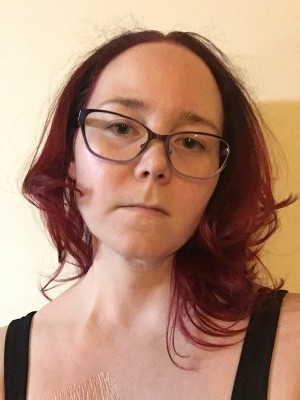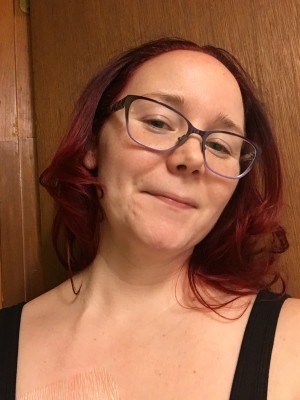Reintroduction of food to a child with SM
I recently put together some recommendations on reintroducing foods to a child with SM who has been exclusively on IV nutrition (TPN) for an extended period of time. I thought you might find some use in it so I have posted it here.
Before people ask, there are no significant publications on children with MCAS because there are not currently unifying diagnostic criteria.
****
Author’s note: I am not a medical doctor. Protocols for reintroducing foods must be developed by the managing care team and tailored to each patient.
There are no large population studies for pediatric systemic mastocytosis. True systemic mastocytosis (in which WHO diagnostic criteria are satisfied) is rare in children. Accordingly, SM in children is generally reported as case reports rather than studies given the population size[i].
Given the lack of in depth literature specifically regarding food challenge in children with SM, I would draw from data in similar situations to identify a safe and appropriate protocol for reintroducing for [name redacted].
There are five scenarios that may contribute insight for food reintroduction in this patient: oral food challenges for FPIES patients; desensitization procedures for delayed hypersensitivity reactions; reintroduction of food after long term parenteral therapy; premedication of patients with mast cell activation disease, including systemic mastocytosis; and mast cell involvement in gastroparesis, ileus and GI dysmotility.
Based upon these scenarios, we can infer the following:
- Reintroduction of food to this patient should follow a long, repetitive schedule with gradually increasing quantities.
- Premedication with antihistamines and glucocorticoids to avoid mast cell reaction should be considered.
- Mast cell activation can directly induce GI dysmotility. Drug management of mast cell activation can suppress impact upon function.
- Enteral feeds should be gradually increased while parenteral feeds are gradually decreased.
| Scenario | Application to food reintroduction in a mast cell patient | |
| 1 | Oral food challenge in setting of FPIES | FPIES and food reactions secondary to mast cell disease are both non-IgE mediated and can culminate in shock requiring emergency intervention. |
| 2 | Desensitization for delayed drug hypersensitivity reactions | Mast cell degranulation and anaphylactic reactions are not type I hypersensitivity reactions. They may also present on a delayed schedule. |
| 3 | Reintroduction of food after long term parenteral nutrition | Reintroducing food to patients after long term parenteral nutrition may impact GI function. Gradual reintroduction is recommended. |
| 4 | Premedication of patients with mast cell activation disease | Patients with mast cell activation disease, including systemic mastocytosis, are advised to premedicate prior to all procedures to decrease risk of reaction and anaphylaxis. |
| 5 | Mast cell involvement in gastroparesis, ileus, and GI dysmotility | Mast cells contribute significantly to GI motility disorders including gastroparesis and ileus. |
- Oral food challenge in patients with food protein induced enterocolitis syndrome (Caubet 2014[ii], Leonard 2011[iii])
- Food protein induced enterocolitis syndrome (FPIES) is a severe non –IgE mediated GI food hypersensitivity syndrome. Patients with FPIES are children. The condition is managed by removing the offending food from the diet for extended periods, usually years.
- Food challenge in FPIES can result in severe, repetitive vomiting; diarrhea; lethargy; pallor; hypothermia; abdominal distension; and low blood pressure. Not all of these features are universally present for all patients.
- The following procedure is recommended for oral food challenge in FPIES children:
- All FPIES oral food challenges must be physician supervised with appropriate supportive care available.
- Over the first hour, 0.06-0.6 g/kg body weight of food protein should be administered in three equal doses. It should not exceed 3g of total protein or 10g of total food or 100ml of liquid for initial feeding.
- If patient has no reaction, give a full serving of food as determined by their age.
- Observe patient for several hours afterward.
- In the event of severe reaction, administer 1mg/kg methylprednisolone intravenously, up to 60-80 mg total; 20 ml/kg boluses of NS; and epinephrine.
- Food challenge is considered positive for reaction if patient experiences typical symptoms as a direct result of the challenge.
- Desensitization for delayed hypersensitivity medication reactions (Scherer 2014[iv], Leoung 2001[v])
- There are no controlled studies available on desensitization for delayed reactions to drugs.
- Described procedures have timespans ranging from hours to weeks.
- Patients who initially failed rapid protocols have succeeded using slower procedures.
- It may take 2-3 days before hypersensitivity symptoms develop in a delayed reaction.
- Long protocols with repetitive, gradually escalating dosing are recommended.
- Antihistamine prophylaxis is often recommended. Drug and dosing vary.
- The following procedure describes an example of a gradually escalating dosing:
|
Dose escalation for desensitization, adapted from antibiotic desensitization procedure (Leoung 2001)[v] |
||
| Dosing level | Drug portion | Frequency of daily dosing |
| 1 | 12.5% | QD |
| 2 | 25% | BID |
| 3 | 37.5% | TID |
| 4 | 50% | BID |
| 5 | 75% | TID |
| 6 | 100% | QD |
- Reintroduction of food after long term parenteral nutrition (Hartl 2009[vi], Oley Foundation)
- Long term TPN may increase intestinal permeability.
- Long term TPN may result in diminished enzymatic activity in GI mucosa.
- The Oley Foundation suggests decreasing parenteral nutrition by 25% while increasing enteral feeds by 25% as the patient tolerates.
- Premedication of patients with mast cell activation disease (Castells 2016[vii])
- Mast cell patients are recommended to premedicate for all procedures using H1 and H2 antihistamines, glucocorticoids, and leukotriene receptor antagonists.
- Mast cell involvement in gastroparesis, ileus, and GI dysmotility (Nguyen 2015[viii], de Winter 2012[ix])
- Mast cells can be activated by a number of pathways which do not involve IgE, including neuropeptides, complement factors, cytokines and hormones.
- Mast cells in the GI tract are closely associated with afferent nerve endings.
- Mast cell behavior in the GI tract is largely controlled by the central nervous system.
- Mast cells are directly involved in GI dysmotility disorders including gastroparesis and ileus.
- Mast cell activation and population may be upregulated in the setting of GI inflammation.
[i] Lange M, et al. (2012) Mastocytosis in children and adults: clinical disease heterogeneity. Arch med Sci, 8(3): 533-541.
[ii] Caubet JC, et al. (2014) Clinical features and resolution of food protein induced enterocolitis syndrome: 10-year experience. J Allergy Clin Immunol, 134(2): 382-389.
[iii] Leonard S, et al. (2011) Food protein induced enterocolitis syndrome: an update on natural history and review of management. Ann Allergy Asthma Immunol, 107:95-101.
[iv] Scherer K, et al. (2013) Desensitization in delayed drug hypersensitivity reactions – an EAACI position paper of the Drug Allergy Interest Group. European Journal of Allergy and Clinical Immunology, 68(7): 844-852.
[v] Leoung GS, et al. (2011) Trimethoprim-sulfamethoxazole (TMP-SMZ) Dose Escalation versus direct rechallenge for Pneumocystis carinii pneumonia prophylaxis in human immunodeficiency virus-infected patients with previous adverse reaction to TMP-SMZ. Journal of Infectious Diseases, 184:992-997.
[vi] Hartl WH, et al. (2009) Complications and monitoring – Guidelines on Parenteral Nutrition, Chapter 11. Gen Med Sci, 7:Doc17.
[vii] http://www.tmsforacure.org/documents/ER_Protocol.pdf
[viii] Nguyen LA, et al. (2015) Clinical presentation and pathophysiology of gastroparesis. Gastroenterol Clin N Am, 44: 21-30.
[ix] de Winter BY, et al. (2012) Intestinal mast cells in gut inflammation and motility disturbances. Biochimica et Biophysica Act, 1822: 66-73.

